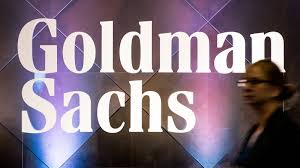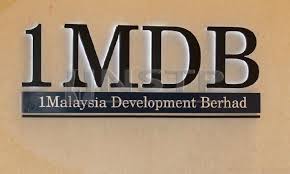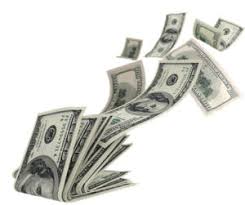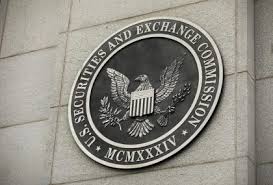Goldman Sachs Settles Massive 1MDB Bribery Case and Agrees to Pay Nearly $3 Billion (Part I of III)

The Justice Department finally closed out its investigation of Goldman Sachs’ massive bribery scheme involving Malaysia’s 1MDB fund. The case is now the largest in US FCPA history (based on its payment to DOJ and related US agencies).
Goldman Sachs entered into three-year deferred prosecution agreement (“DPA”) with the filing of a criminal information charging conspiracy to violate the anti-bribery provisions of the FCPA. At the same time, Goldman Sach’s Mayalaysia subsidiary, Goldman Sachs (Malaysia) Sdn. plead guilty to conspiracy to violate the FCPA.
Last year, Tim Leissner, the former Goldman Sachs Southeast Asia Chairman, pleaded guilty to conspiracy to money laundering and violate the FCPA. Roger Ng, former managing director of Goldman and head of investment banking in Malaysia, was charged by indictment with conspiracy to launder money and to violate the FCPA. Ng was extradited from Malaysia to the United States and is scheduled for trial in March 2021.
At the center of the vast scheme was Jho Low, a Malaysian financier, who has been indicted and charged with conspiracy to commit money laundering and to violate the FCPA. Jho Low has not been apprehended.

Along with these prosecutions, the Justice Department has been aggressively seeking recovery of assets associated with and traceable to the 1 MDB money laundering and bribery scheme. DOJ has recovered over $1 billion in assets.
Goldman Sachs participated in a vast international corruption scheme over a five-year period in which they paid $1.6 billion in bribes to high-level government officials in Malaysia and Abu Dhabi to obtain lucrative underwriting contracts worth approximately $6.5 billion in three bond raises for 1MDB from which Goldman earned over $600 million in fees. The 1MDB fund was established to drive strategic initiatives for the long-term economic development of Malaysia. Goldman diverted at least $1 billion of the fund to pay bribes.
Between 2009 to 2014, Goldman executed a massive bribery scheme through the activities of Leissner, Ng, Low and a former executive in Asia. The scheme involved bribery payments to Malaysia and Abud Dhabi government officials in exchange for Goldman’s lead role in advising on energy acquisitions, as underwriter of three significant bond offerings for a total of $6.5 billion, and a potential role in an initial public offering for 1 MDB’s energy assets. Leissner, Ng, and Low retained a portion of the misappropriated funds for themselves and other co-conspirators. Through Low’s influence and contacts, Goldman was able to secure the lead underwriting role in three valuable bond transactions between 2012 to 2013, known internally as “Project Magnolia,” “Project Maximus” and “Project Catalyze.”
As part of the settlement, Goldman admitted to control and oversight failures in the review and ultimate approval of various corrupt transactions. Goldman was on notice that any transaction involving Low created a significant risk of corruptions, and even while they had concerns that Low was involved in the transaction, Goldman control officers failed to take reasonable steps to investigate and confirm the absence of corruption risks. Goldman’s failure reflected its desire to elevate its standing in Southeast Asia and earn $600 million in fees.

Under the terms of settlement, Goldman will pay a criminal penalty and disgorgement of just over $2.9 billion. Goldman reached parallel resolutions with foreign enforcement agencies in the United Kingdom, Singapore, Malaysia and Hong Kong, along with domestic agencies, including the Securities and Exchange Commission ($606 million in disgorgement and penalty of $400 million), the Board of Governors of the Federal Reserve System ($154 million), the New York State Department of Financial Services ($150 million). DOJ will credit approximately $1.6 billion in payments with respect to these parallel resolutions.
Under the FCPA Corporate Enforcement Policy, the Justice Department noted that: Goldman did not voluntarily disclose the conduct to the Justice Department; the bribery conduct was serious and pervasive, and involved high-level employees who ignored significant red flags and numerous Goldman subsidiaries; the amount of the bribes totaled over $1.6 billion and were made to 11 foreign officials, including high-ranking officials of the Malaysian government. Goldman received partial credit for its cooperation with DOJ’s investigation but did not receive full credit for cooperation because it significantly delayed producing recorded phone calls in which Goldman’s bankers, executives and control functions discussed bribery and misconduct relating to the bribery scheme.
DOJ did not require Goldman to retain an independent corporate compliance monitor despite the pervasive scheme, the involvement of high-level officials, the failure of Goldman senior executives to delay and investigate significant red flags, and the unethical culture evident by Goldman’s commitment to a vast corruption scheme.

Based on all of these factors, the Justice Department only gave Goldman a 10 percent reduction off the bottom of the sentencing fine range.
Interestingly, and perhaps to throw a bone to those questioning Goldman’s senior executive involvement, Goldman announced the same day that it would be seeking bonus clawbacks and pay cuts to current and former executives, including former CEO, Lloyd Blankfein. Goldman’s board of directors issued a statement entitled “an institutional failure.”















